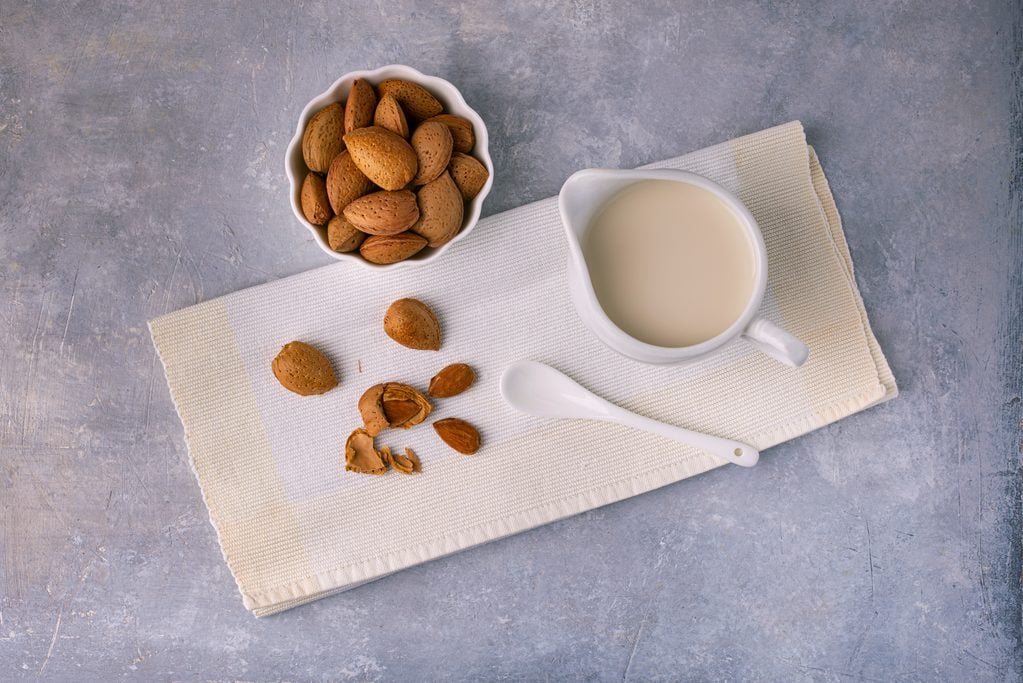The Downside of Almond Milk People Aren’t Talking About
Updated: Mar. 08, 2024

Almond milk is increasingly popular, but you'll want to read this before adding it to your next cup of coffee.
Dairy milk sales have been on a downward slide for years now, as more and more people are opting for plant-based milks and other alternatives for health or dietary reasons. Among the most popular is almond milk.
Soaring sales mean increased production
Almond milk sales in the United States have soared recently, exceeding $1 billion in 2018 a number that is expected to continue climbing 14.3 percent before the end of 2025.
That’s a lot of almond milk—which requires a lot of almonds. In the United States, virtually all of those almonds are produced on almond farms located in a 500-mile section of California. California produces 80 percent of the world’s almonds, and 100 percent of the U.S. commercial supply, according to the Almond Board of California. Don’t know which nondairy milk is the best? Find out by diving into this oat milk vs. almond milk debate.
The sting of pollination
Almond farms need one critical resource that many people might not think about to grow all those almonds: bees. The bees are needed to pollinate the almonds. The vast acreage of Californian almond farms requires significantly more bees than other crops—and it’s not a bee-friendly environment, according to a recent article in the Guardian.
Almond pollination is taxing for bees because the season starts early, requiring bees to be “deployed” at a time of year when they are normally dormant, thus disrupting their natural cycle. Making matters worse, almond farms have a number of hazards for bees, including toxic pesticides, parasites, and even aggressive species of honeybees imported from overseas.
Bees in crisis
The plight of bees in the United States (and around the globe) has been getting a lot of buzz lately; a lot of bees are dying, in unusually large numbers. The Climate Institute reported in 2016 that the United States saw an average loss of 1.6 million bees each year, for a total of more than 10 million bees over a seven-year period.
The winter of 2018-2019 was a particularly harsh one for bees, reported Science News, with more than one-third of beekeepers’ colonies dying out before the winter ended, making it the worst winter season for bees in more than a decade.
A complicated issue
Most experts cite climate change and the increasing use of pesticides and other harsh chemicals are the biggest culprits. A few years ago, several species of American bees were added to the endangered list. Many scientists, though, were quick to clarify that this represents a very small segment of the bee population, which encompasses thousands of individual species. While you are thinking about the environment, see the downside of reusable bags you may not have thought of.
Not so cut and dry
Not everyone agrees that the future is bleak for bees—or at least, not as bleak as what was reported in the Guardian. The Almond Board of California issued a statement disputing some of the points reported in the article, noting, “As an industry, we are committed to protecting and improving honey bee health.” The statement also noted that “the California almond community has funded 125 research projects supporting bees, more than any other crop group.”
Still, everyone agrees that bees in general are facing some formidable challenges, and it’s in all of our best interests to make protecting bees a top priority. While there is no easy solution, there are things we can all do to help the bees, including not using pesticides or other chemical lawn treatments, supporting local farmers, and even starting our own bee garden filled with plants that attract bees.
Sources
- California Almonds
- Climate Institute: “7 Species of Bees Added to the Endangered List”
- Science News: “U.S. honeybees had the worst winter die-off in more than a decade”
- The Guardian: “‘Like sending bees to war’: the deadly truth behind your almond milk obsession”
- Grand View Research: “Almond Milk Market Size, Share & Trends Analysis Report By Application (Beverages, Personal Care), By Distribution Channel (Hypermarkets & Supermarkets, Convenience Stores, Online), And Segment Forecasts, 2019 – 2025″
- Nielsen: “A SHOWDOWN IN THE U.S. MILK AISLE CONTINUED AT THE END OF JULY”
